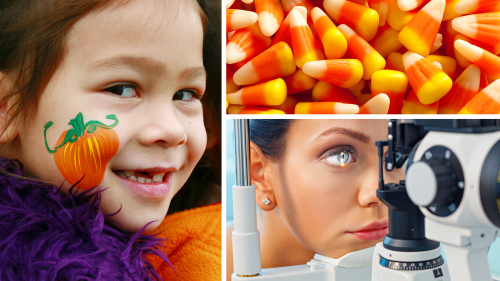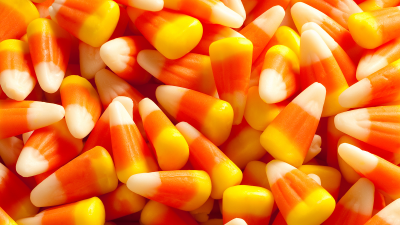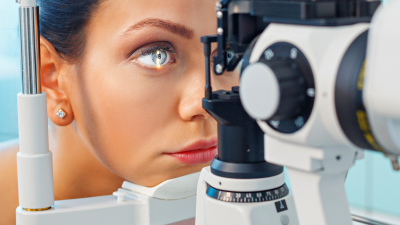Halloween Safety Tips: Costumes, Candy, and Colored Contact Lenses
Enjoy a safe and happy Halloween by following these guidelines.

Whether your Halloween plans are for adults or kids, there’s plenty to consider before choosing a costume, putting on makeup, and eating a bag full of treats.
To help you and your loved ones enjoy a safe and happy Halloween, here are some tips from the U.S. Food and Drug Administration, the Consumer Product Safety Commission, and the Centers for Disease Control and Prevention.
- Wear costumes that say “flame resistant” on the label. If you make your costume, use flame-resistant fabrics such as polyester or nylon.
- Wear bright, reflective costumes or add strips of reflective tape so you’ll be more visible; make sure the costumes aren’t so long that you’re in danger of tripping.
- Wear makeup and hats rather than costume masks that can obscure your vision.
- Test the makeup you plan to use at least 24-48 hours in advance. Put a small amount on the arm of the person who will be wearing it. If a rash, redness, swelling, or other signs of irritation develop where the makeup was applied, that's a sign of a possible allergy.
- Vibrantly colored makeup is popular at Halloween. Check the FDA’s list of color additives to see if the colors are FDA approved. If they aren’t approved for their intended use, don’t use them. This is especially important for colored makeup around the eyes.
- Don’t wear decorative (colored) contact lenses that appear to change how your eyes look due to the risk of eye injury, unless you have seen an eye care professional for a proper fitting and been given instructions for how to use the lenses. See Eye Safety below for more information.
Safe Treats
Eating sweet treats is also a big part of Halloween fun. If you're concerned about food safety, there are some things to know.
Before you or your children go trick-or-treating, remember these tips:
- Don’t eat candy until it has been inspected at home.
- Eat a snack before heading out to avoid the temptation of nibbling on a treat before it has been inspected.
- In case of a food allergy, check the label to ensure the allergen isn’t present. Tell children not to accept — or eat — anything that isn’t commercially wrapped.
- Parents of very young children should remove any choking hazards such as gum, peanuts, hard candies, or small toys from the Halloween bags.
- Inspect commercially wrapped treats for signs of tampering, such as an unusual appearance or discoloration, tiny pinholes, or tears in wrappers. Throw away anything that looks suspicious.
For partygoers and party throwers, the FDA recommends the following tips for two seasonal favorites:
- Unpasteurized juices and juices that have not been further processed are at higher risk of foodborne illness. Look for the warning label to identify juice that hasn’t been pasteurized or otherwise processed, especially packaged juice products made on site at retail establishments. If unsure, always ask if juice has been pasteurized or not. Normally, commercially processed juice in boxes or bottles from your grocer’s refrigerated or shelf stable sections, and frozen concentrate in the freezer section has been pasteurized or otherwise processed to reduce harmful microorganisms.
- Before bobbing for apples — a favorite Halloween game — reduce the risk of bacteria by thoroughly rinsing the apples under cool running water. As an added precaution, use a produce brush to remove surface dirt.
Eye Safety
The FDA joins eye care professionals in discouraging consumers from using decorative (colored) contact lenses that have not been prescribed by a doctor. Decorative contact lenses sold in costume stores or other retail stores without a prescription are illegal and could cause harm. These are contact lenses that have not been approved by the FDA for safety and effectiveness. Consumers should only use brand name contact lenses from well-known contact lens companies.
If you have never worn contact lenses before, Halloween should not be the first time you wear them. Experts warn that buying any kind of contact lenses — which are medical devices and regulated as such — without an examination and a prescription from an eye care professional can cause serious eye disorders and infections, which may lead to permanent vision loss. Despite the fact that it’s illegal to sell decorative contact lenses without a valid prescription, the FDA is aware that these lenses are still sold without a prescription on the internet and in retail shops and salons — particularly around Halloween.
Although unauthorized use of decorative contact lenses is a concern year-round, Halloween is the time when people may be more inclined to use them, perhaps as costume accessories, which make the wearer’s eyes appear to glow in the dark, create the illusion of vertical “cat eyes,” or change the wearer’s eye color.
When they are bought and used without a valid prescription, without the involvement of a qualified eye care professional, or without appropriate follow-up care, it can lead to significant risks of eye injuries, including blindness.



